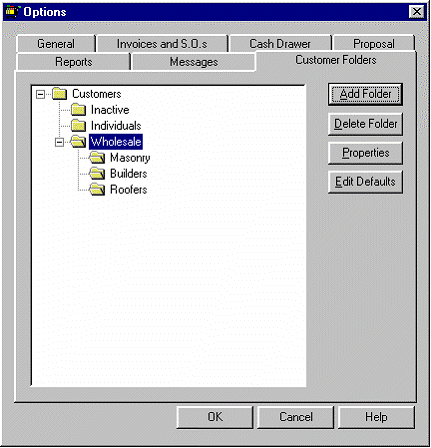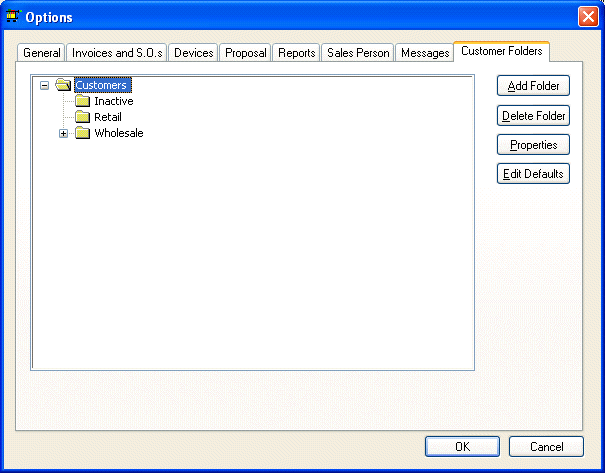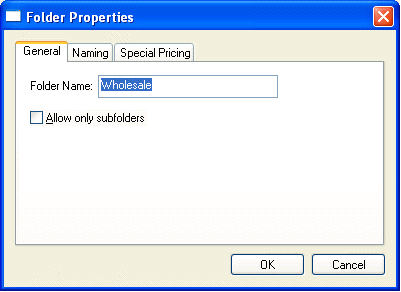

Folder lists are used in a variety of ways throughout EBMS. These lists can be normally edited in the options window. For example, go to the Sales > Options > Customer folders tab.

Folder Pane
The root folder in our example is named Customers with subfolders named Inactive, Individuals, and Wholesale. You can insert folders within folders. In our example we have three folders named Masonry, Builders, and Roofers within the folder named Wholesale. It is recommended that you do not nest folders more than 5 levels because of report restrictions.
The Add Folder button is used to add an additional folder to the folder list.
1. Select the folder that will house the new folder and press the Add Folder button.
2. A folder Properties dialog will open, allowing you to enter the new folder name.

3. The Allow only subfolders switch should be switched ON if you do not want to insert any information into the folder itself but only allow subfolders. This is useful when planning your folders and requiring the user to place all data in subfolders rather than parent folders. In the example above, the user will not be able to place customers in the Distributor folder. The Distributor folder will only be useful to insert sub folders.
This dialog may include some other information that is related only to the specific list. For example, the General Ledger Folders include a pair of Allowable Range entries.
Review the Creating and Changing IDs section for more details on the Naming tab. Other tabs may appear such as Special Pricing. Refer to The Special Pricing manual for details on advanced modules.
Save folder information by clicking OK.
If you press the Delete Folder button, the folder that is highlighted will be removed. A folder must be empty before it can be deleted. Note that the root folder (the top of the list) and the folder named inactive cannot be deleted. These are system folders and should not be removed.
The Properties button allows the user to edit the folder properties.
The Edit Defaults button activates the defaults window that can be used for two different powerful features-to edit defaults and to globally change information. Review the Setting Customer Defaults section for more information on customer defaults. Additional sections for other module folders such as Setting Vendor Defaults or Setting Employee Defaults will be found in their respective sections.